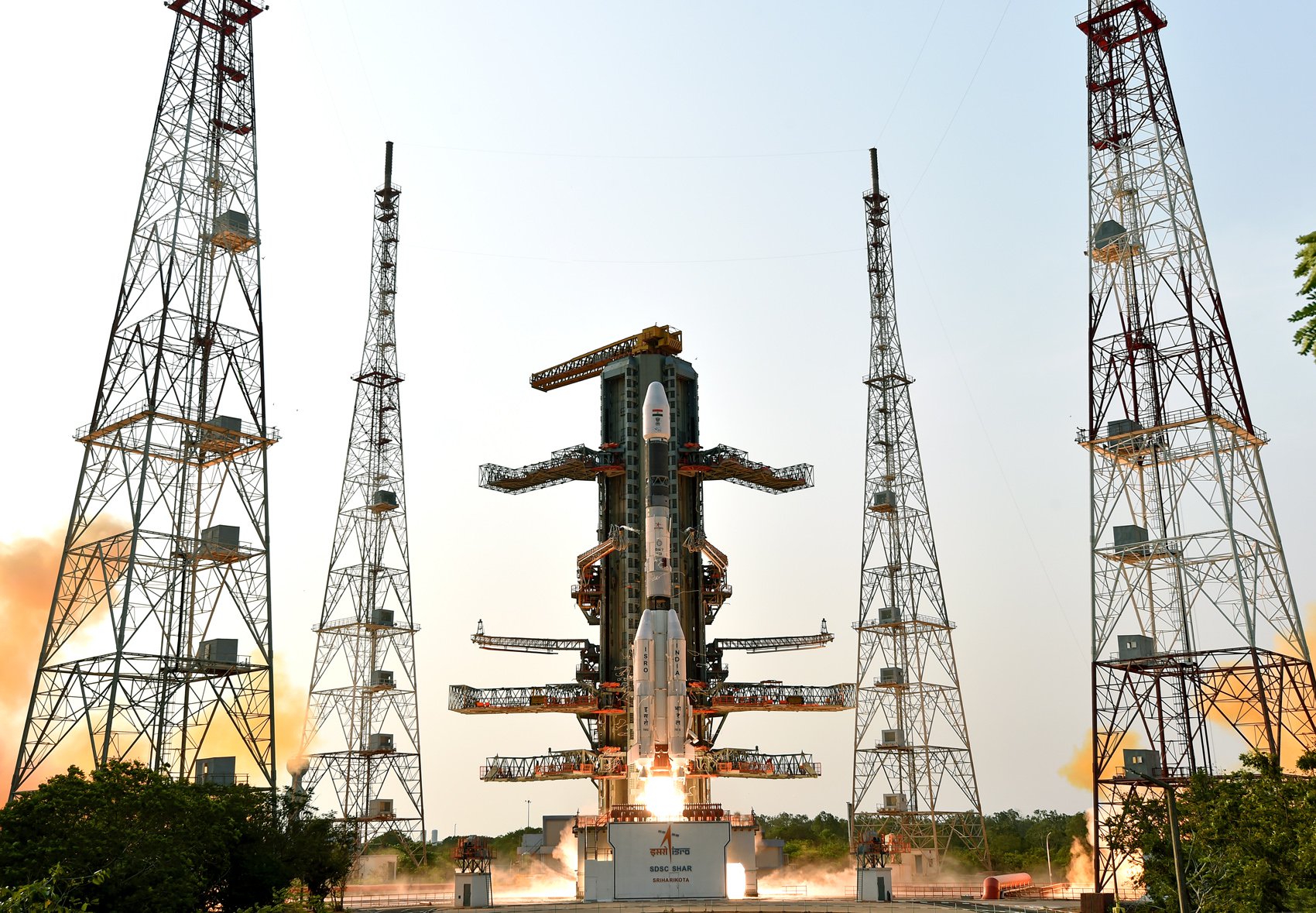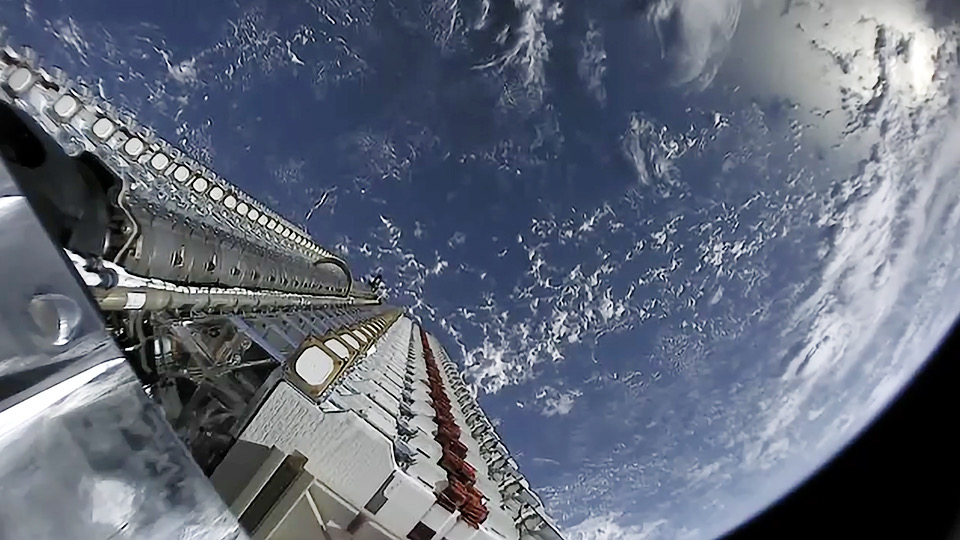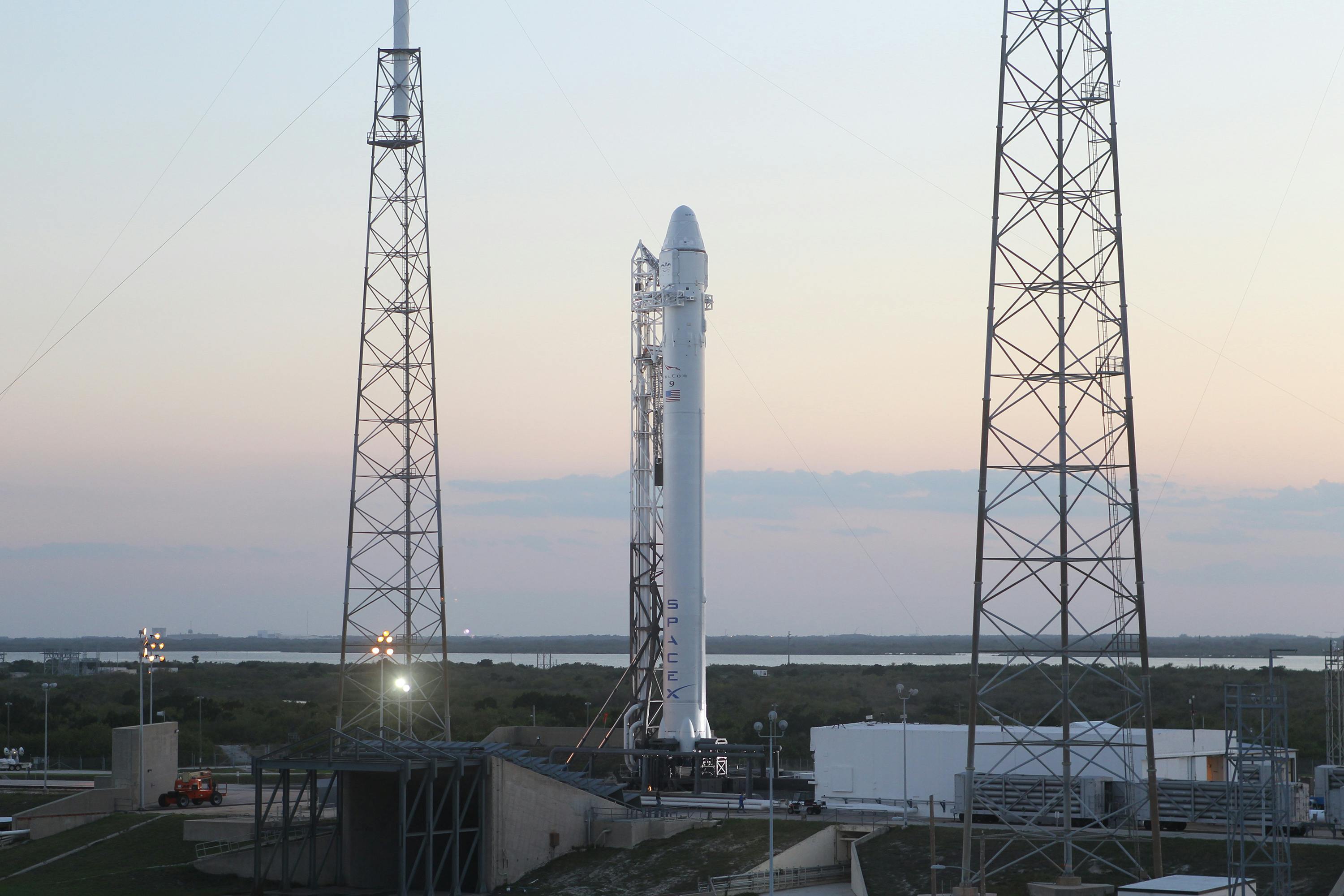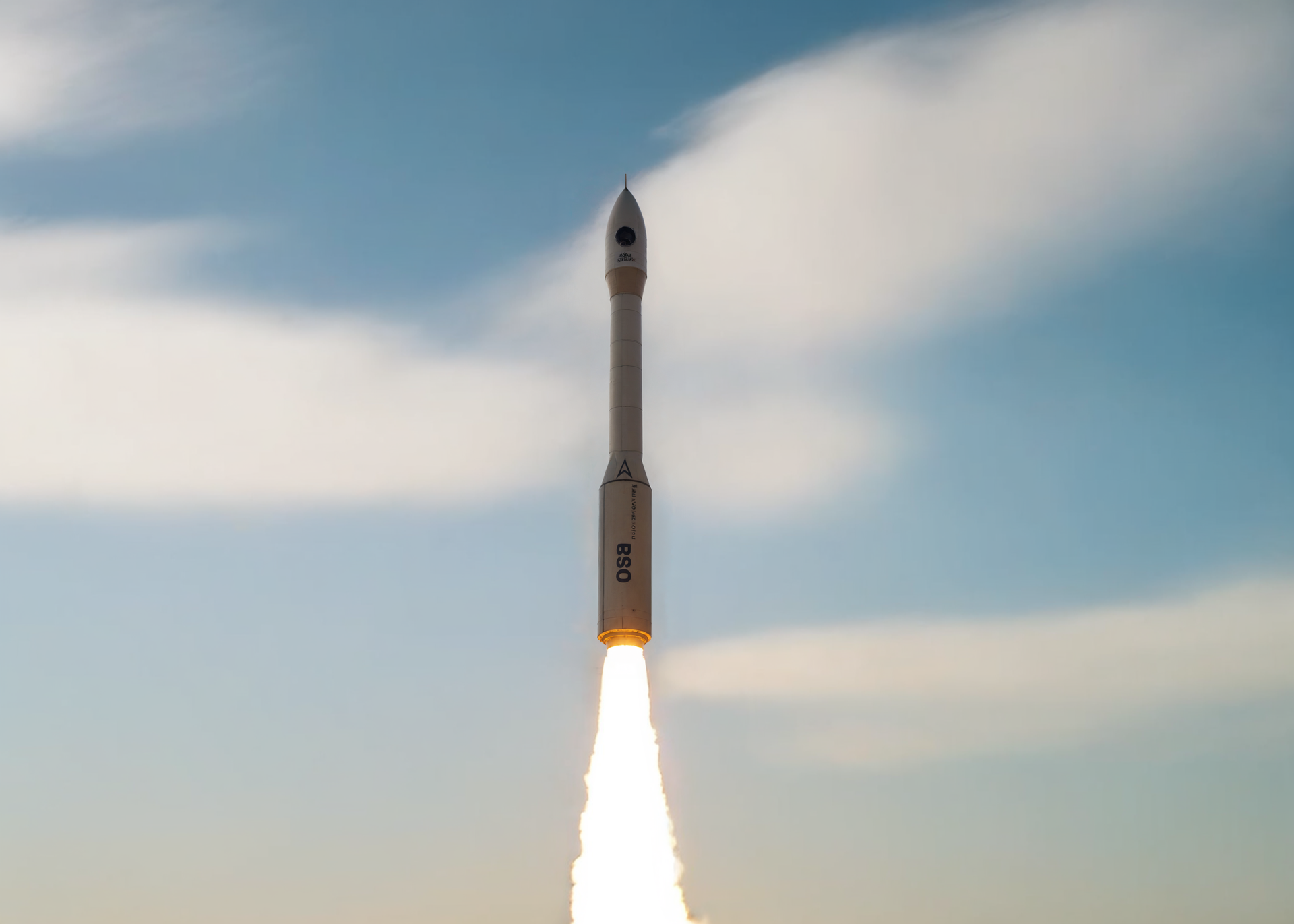· space brief · 6 min read
Space Brief 3 Jun 2025
Today's highlights include China's remote-sensing satellite launch, U.S. Space Force's investment in missile-tracking satellites, and NASA's MAVEN milestone on Mars.

📄Top Stories
China has successfully added the Shijian 26 satellite to its orbiting fleet, marking its 33rd rocket mission this year. The U.S. Space Force has awarded a $1.2 billion contract to BAE Systems for advanced missile-tracking satellites. NASA’s MAVEN probes into Mars’ atmospheric mysteries with new findings on sputtering processes.
📰Detailed Coverage
China Expands Remote Sensing Capabilities with Shijian 26
China has launched the Shijian 26 satellite using a Long March 4B rocket, continuing its aggressive expansion into space with its 33rd launch this year. This mission supports China’s remote-sensing needs by inserting the satellite into a sun-synchronous orbit at a height of 700 kilometers, enhancing its earth observation capabilities.
This launch highlights China’s growing emphasis on satellite technologies, reflecting its commitment to strengthening remote-sensing infrastructure. Such missions are vital for improving data acquisition for various applications such as environmental monitoring, disaster response, and agricultural planning, thus impacting global satellite tracking endeavors.
Read the full story: SpaceDaily
U.S. Space Force Bolsters Missile Defense with BAE Systems
The U.S. Space Force has awarded a $1.2 billion contract to BAE Systems to develop new missile-tracking satellites aimed at enhancing national security against hypersonic threats. This initiative is part of an expansion of the medium Earth orbit constellation, crucial for superior detection and tracking capabilities.
Integrating advanced satellite technology will significantly bolster the U.S.’s defense posture, offering enhanced capabilities to track and neutralize threats swiftly. This marks a key development in reinforcing satellite-based defense infrastructures, crucial for strategic military defense systems.
Read the full story: SpaceNews
Space Force Faces Challenges with ULA’s Vulcan Delays
The U.S. Space Force, expressing frustration, faces continued delays in the United Launch Alliance’s (ULA) Vulcan rocket program, which has impacted its launch schedule. After years of setbacks, the Space Force is redirecting missions to SpaceX to maintain operational timelines.
These delays underscore the challenges of dependable launch services, highlighting the competitive nature of the aerospace industry. This situation also emphasizes the increasing reliance on established launch partners to meet strategic commitments efficiently.
Read the full story: Space Explored
NASA’s MAVEN Discovers Crucial Martian Atmospheric Processes
NASA’s MAVEN mission has made a groundbreaking observation of atmospheric sputtering at Mars, a significant find that provides insight into how the planet may have lost much of its water. This process involves the bombardment of atmospheric particles by solar wind, resulting in atmospheric escape.
This discovery offers valuable data that could help scientists unravel the historical evolution of Mars’ atmosphere, providing a better understanding of its climate changes over eons. Such data are essential in piecing together the planet’s past and its potential for supporting life in its early history.
Read the full story: Mars Daily
Navy’s Bold Step in Nuclear Ship Dismantlement
The U.S. Navy has awarded its first-ever contract to civilian industry for the dismantlement of a nuclear-powered ship, marking a significant shift in military contracting. This contract, valued at $536 million, represents a strategic decision to outsource complex maritime operations traditionally handled in-house.
Entrusting civilian entities with this task could set a precedent for future operations, signifying potential shifts in logistical and operational strategies. Such cooperation could lead to efficiencies and cost savings, emphasizing the Navy’s evolving approach to asset disposal.
Read the full story: Breaking Defense
🛰️Satellite Spotlight
- Satellite Name: ONEWEB-0679
- NORAD ID: 56715
- Launch Date: May 20, 2023
- Mission: This satellite is part of the OneWeb constellation, aimed at delivering global broadband communication services.
- Orbit: Low Earth Orbit (LEO)
- Operator: OneWeb
- Fun Fact: ONEWEB-0679 is equipped with a Ku-Band payload and is designed to operate for over seven years, contributing to a larger initiative to provide internet connectivity worldwide.
Track this satellite in real-time on our web app: Track ONEWEB-0679
🌌Space Weather
Current space weather shows Geomagnetic storm (G1), Enhanced solar wind (583 km/s).
R0 - S0 - G1
Next 24 Hours: The upcoming period indicates high geomagnetic activity with the potential for strong geomagnetic storms. Specifically, G3 (Strong) storm levels are expected through early to midday on June 3rd as the effects of a Coronal Mass Ejection (CME) linger. This might impact satellite operators as increased atmospheric drag could affect Low Earth Orbit (LEO) satellites, necessitating trajectory adjustments. Ground-based radars and telescopes may experience fluctuations in data quality, while satellite communication users may encounter minor disruptions due to anticipated R1-R2 (Minor-Moderate) radio blackouts, with a slight chance for R3 (Strong) events due to the flare potential of Region 4100. There is a small chance for greater than 10 MeV proton events (S1-Minor) during this period, primarily linked to ongoing flare activity.
Beyond: Looking ahead from June 2nd to June 28th, solar activity is likely to remain at moderate levels (R1-R2/Minor-Moderate), with potential for R3 (Strong) as Region 4100 transitions off the west limb. Flare activity from this region may contribute to M-class (R1-R2) X-ray events throughout the outlook period. The current proton event is set to conclude on June 2nd, with no new events anticipated at geosynchronous orbit. LEO satellites may be impacted by high electron flux levels on June 3-5, June 14-22, and June 26-28 due to recurrent Coronal Hole influence. Geomagnetic activity will likely remain elevated, with expectations of G1 (Minor) to G2 (Moderate) storms on June 2-3 due to diminishing CME influences. Unsettled to active conditions are anticipated on June 4-7 and June 10-12 driven by recurrent coronal hole high-speed stream (HSS) influences, with minor disturbances expected periodically throughout the remainder of the month.
Upcoming Space Launches
June 4
- SpaceX Falcon 9:
- Starlink Group 11-22 from Vandenberg Space Force Base, CA, USA (23:28 UTC) A batch of satellites for the Starlink mega-constellation - SpaceX’s project for space-based Internet communication system.
June 5
- China Aerospace Science and Technology Corporation Long March 6A:
- G60 Polar Group TBD from Taiyuan Satellite Launch Center, People’s Republic of China (20:36 UTC) 18 Low Earth Orbit communication satellites with Ku, Q and V band payloads for the G60 constellation operated by Shanghai Spacecom Satellite Technology.
June 7
- SpaceX Falcon 9:
- Sirius SXM-10 from Cape Canaveral Space Force Station, FL, USA (03:19 UTC) SXM-10 is a high-powered, digital, audio radio satellite for SiriusXM designed to enhance programming reception.
June 8
- SpaceX Falcon 9:
- Starlink Group 15-8 from Vandenberg Space Force Base, CA, USA (13:34 UTC) Another batch of satellites for the Starlink mega-constellation focusing on space-based Internet communication.
June 9
- SpaceX Falcon 9:
- Axiom Space Mission 4 from Kennedy Space Center, FL, USA (12:46 UTC) This mission will carry a professionally trained commander and three private astronauts to the International Space Station.
June 13
-
SpaceX Falcon 9:
- Starlink Group 15-6 from Vandenberg Space Force Base, CA, USA (01:46 UTC) Continuing the deployment of satellites for the Starlink mega-constellation for Internet services.
-
United Launch Alliance Atlas V 551:
- Project Kuiper (KA-02) from Cape Canaveral Space Force Station, FL, USA (18:29 UTC) Project Kuiper is a mega constellation of satellites in Low Earth Orbit managed by Kuiper Systems LLC to provide broadband internet access.
June 18
- Indian Space Research Organization GSLV Mk II:
- NISAR (NASA-ISRO Synthetic Aperture Radar) from Satish Dhawan Space Centre, India (11:30 UTC) The NISAR satellite will use advanced radar imaging to map the elevation of Earth’s land and ice masses, assisting in observing complex processes and natural hazards.
Note: Launch dates and times are subject to change due to technical or weather considerations.

Maurice Stellarski





